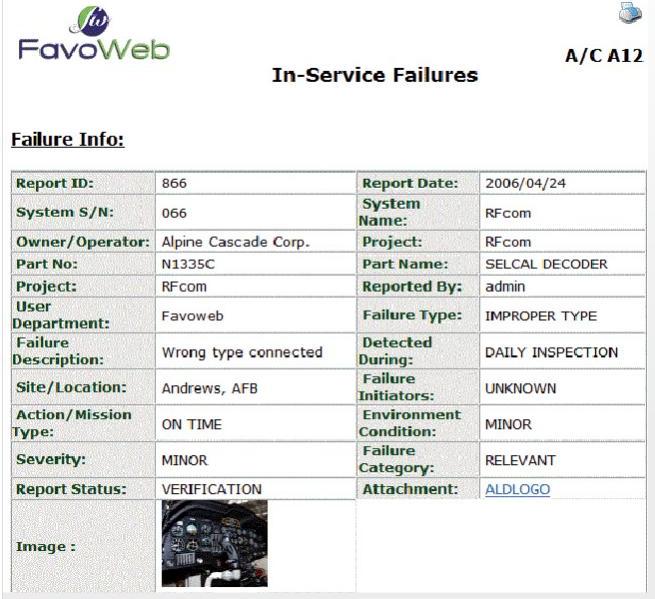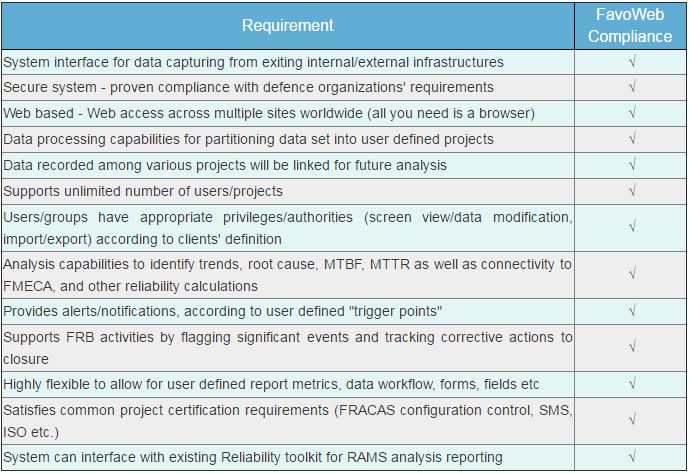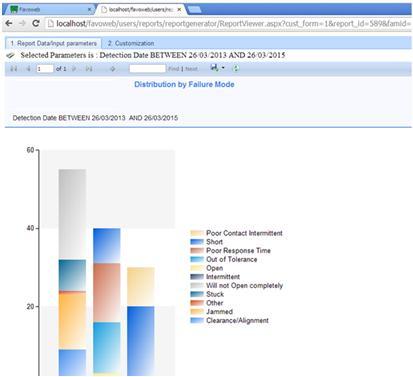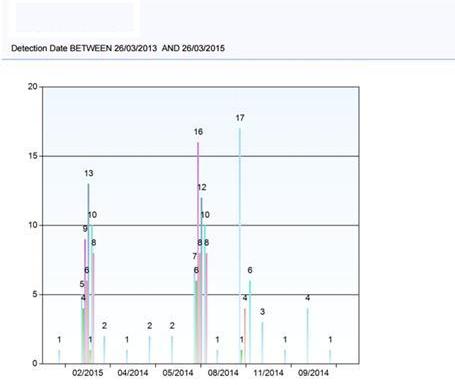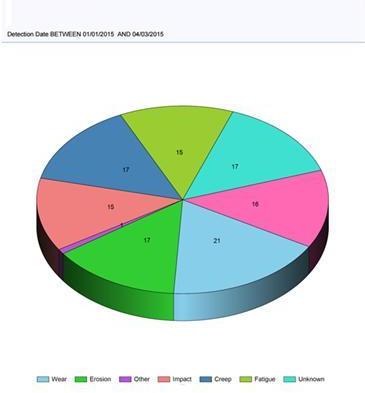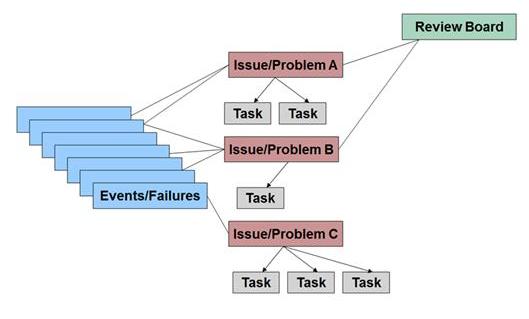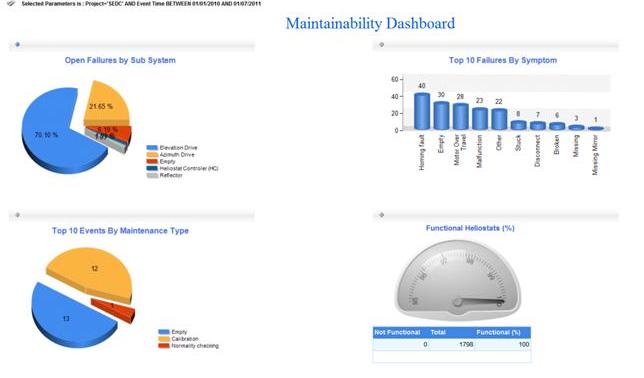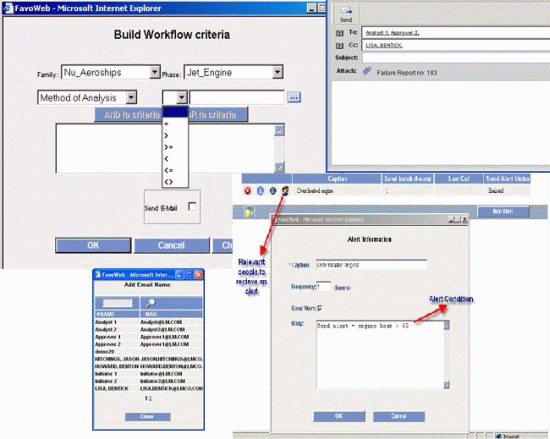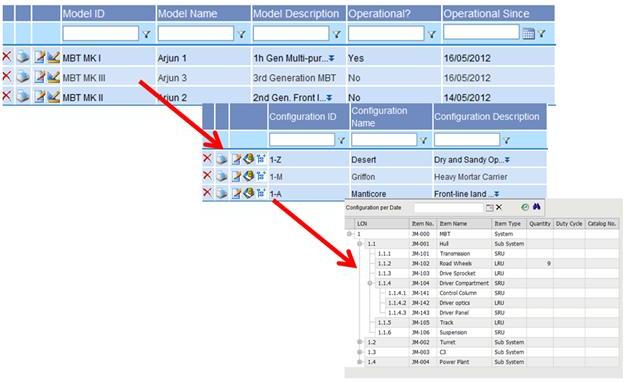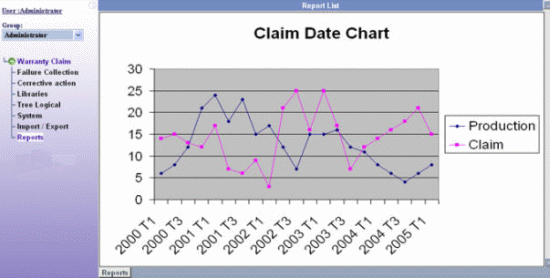FRACAS FavoWeb
FRACAS Favoweb implements a reasonable number of functionalities and features as described below:
FavoWeb – Compliance with Common FRACAS Requirements
FavoWeb FRACAS – Advanced Reports and Analytical Outputs
Below are sample reports produced by FavoWeb FRACAS:
FavoWeb Corrective / Preventive Action Module
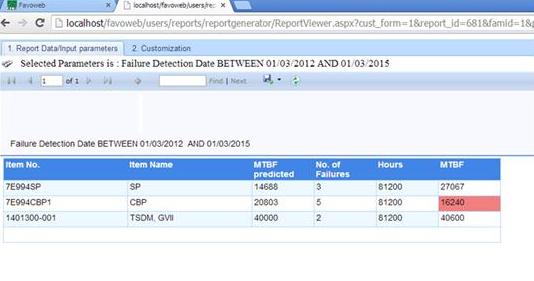
FavoWeb FRACAS system supports a full scale corrective/preventive action.
Each individual event/incident/Non conformance or failure within the database can be associated (“connected”) to a certain issue.
Issues are defined a systematic problem of repeated events or event with substantial impact, which requires an investigation and implementation of corrective action.
FavoWeb FRACAS System supports 8D methodology in its investigation protocol into issue’s root cause.
By utilizing FavoWeb’s Corrective Action module, the user can invite participations to the FRB/MRB meeting, list issues for discussion, assign action items and follow up on Corrective/Preventive Action implementation and effectiveness.
This interactive tool allows the authorized users to view concise real-time information such as trend analysis, failure distribution / pareto, MTBF level and correlations.
FavoWeb Dashboard helps decision makers to analyze trends, safety, availability, system status and grasp more than one dimension in one look.
The tool’s “drill down” capabilities allow the user to look/investigate metrics and data outputs.
The module is customizable and therefore can be tailored according to customer’s specifications.
FavoWeb is well integrated with existing OLAP based tools (both SQL Server and Oracle based).
• Alerting mechanism
• One look general view
• OLAP methodology
• Implemented on NET. Platform (no ActiveX)
Alert Module enables automated sending of messages to relevant professionals according to pre-defined “trigger points”.Example of such “trigger points” includes (but not limited to):
b. The due date of a certain action has passed – the relevant individual will receive an alert message.
c. The condition of a certain tool has reached an “abnormal” level (3 occurrence over a short period of time, or a high/low MTBF level etc.) – an alert will be sent (along with an attachment of the report) to the relevant individuals.
d. An incident has occurred during off-hour in the plant – a message will be sent to alert relevant people.
FavoWeb FRACAS Alerts allows creating an unlimited number of user-defined criteria for alerts and notification issuing.
FavoWeb Alerts Module plays a crucial part in the overall safety and efficiency of any process.
All installed systems and sub-systems can be recorded with their respective serial numbers and LRU assemblies.
The module allows for systems usage data (clocks / meters) to be defined and their readings to be collected for future analysis over a certain timeline or usage metric (engine hours, Km, transition hrs., operation hours etc.). This information is crucial for accurate reliability calculations such as MTBF, Reliability Growth etc.
The module also serves for tracing an installation history of each serial number/system.
System and sub system information can be entered manually through FavoWeb GUI or imported form external database.
Warranty Module of FRACAS
The warranty claim database aims to preserve history of the warranty returns and to carry out some requests in order to realize statistical analysis which will be part of Quality studies or will be taken into account during new parts design.
Most analysis is based on Weibull distributions.
The warranty claim database is a key tool in the deployment of a warranty plan/policy, which examines extended warranty scenarios.
Main Functions
• Preserve an history of the warranty returns
• Make analysis to predict failure trends (Weibull curves) with associated costs
• Compare analysis made on different products, in different countries
• Have reliable quality data to be used as references for the development of new technologies
• Improve and simplify the management of warranty data towards customers or suppliers
• Trace action plan to solve the warranty problems
• Improve the reporting streamlining and cross information analysis
• Support the deployment of the ”Reliability” culture in the organization

